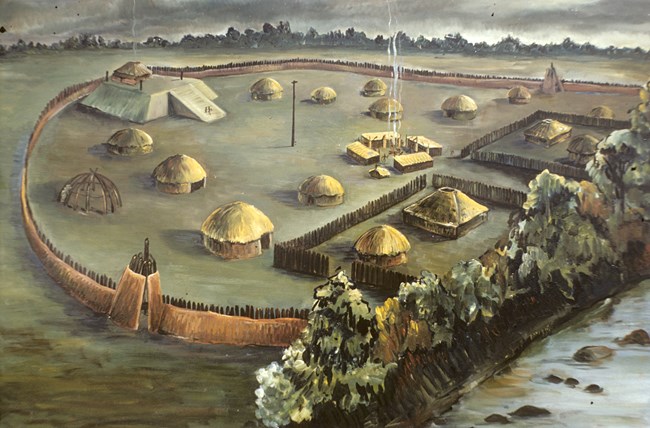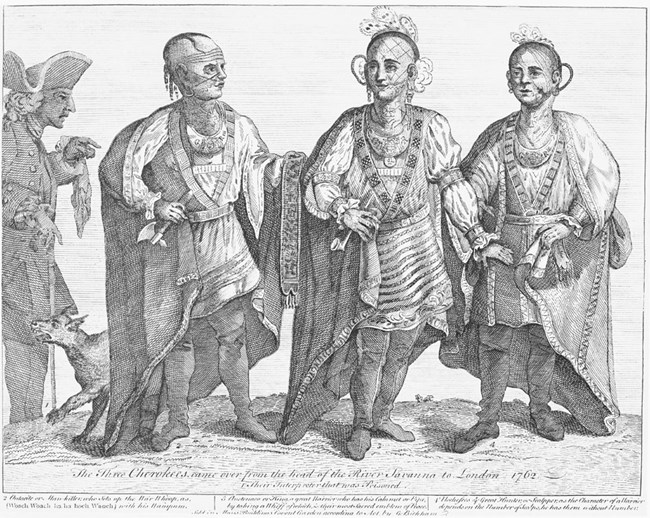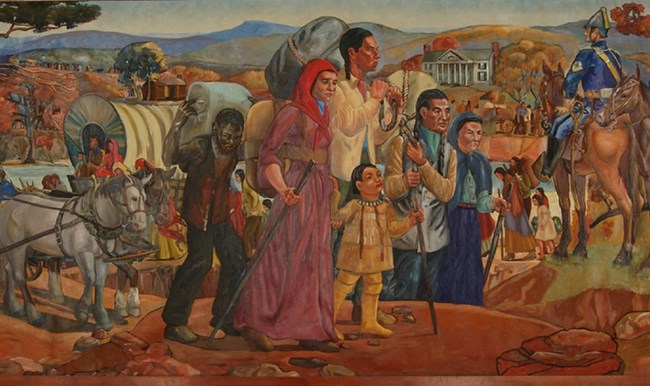
The ancestors of the Cherokee are considered part of the later Pisgah Phase of the South Appalachian Mississippian culture, a period where ceremonial mounds were built in a town with numerous smaller villages around it. As with so many of the Mississippian peoples across the southeast, the arrival of Spanish conquistadors would spread disease and chaos through their lands, beginning the process of destruction from which the Native American tribes we know today arose. 
As the English expanded their territory in the colonies to the east side of the Appalachian mountains, the Cherokee fought with the Muscogee Creek over their lands to the south and west. The Cherokee quickly adapted to their new European neighbors, adopting their technologies, agricultural practices, and customs, enmeshing them with their own. And while the Cherokee enjoyed good relations with the British, their relationship with the new American nation would be full of promise, yet ultimately disrupt their very ways of life.
Continuing on the path of adopting Euro-American technologies and practices while still maintaining their soverign status, the Cherokee found allies in the American government. Federal and state laws were enacted to protect the Cherokee lands from encroachment by settlers, and the Cherokee in turn assisted the new nation by sending warriors to help in the fight against the British and the Muscogee. In fact, Cherokee warriors were instrumental in the success of General (and future president) Andrew Jackson at the Battle of Horseshoe Bend, effectively ending the Creek War. Sadly, the laws set up to prevent settler encroachment and the bravery shown on the battlefield under the American flag were not enough to save the Cherokee people from a new and growing nation. Jackson's military successes and accesion to the presidency opened the door for unfair treaties with the Cherokee ceeding large portions of land, the overturning of laws in favor of further white settler expansion, and eventually, the decision of the Cherokee people to either give up their sovereignity as an indenpendent people or give up all their lands, leading to the Trail of Tears. 
Oklahoma History Center Today, the Cherokee people are the largest Native American group in the United States. You can learn more about the Cherokee people and the Trail of Tears by visiting sites along the Trail of Tears National Historic Trail. |
Last updated: June 14, 2021
